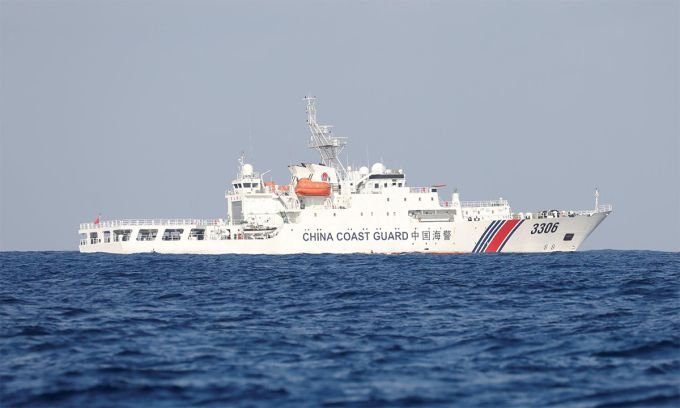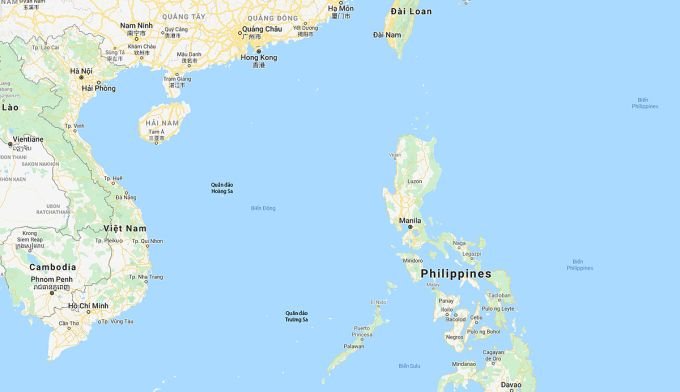
The `Three-pronged attack` strategy has been adopted by the Central Committee of the Communist Party of China and the Central Military Commission since 2003, with the aim of controlling the East Sea for both economic and military purposes without
`China’s actions from then until now in the East Sea need to be viewed according to their ‘three-pronged attack’ strategy,` said legal expert Antonio T. Carpio, former acting chief justice of the Supreme Court.
Chinese coast guard ships operating at Scarborough Shoal in dispute with the Philippines, April 2017.
The first attack was a propaganda campaign to the world with the false claim that `the East Sea has belonged to China since ancient times`.
China also blatantly claims to be `the first country to discover, name, explore and exploit resources` in the archipelagos in the East Sea, and at the same time `continuously exercise sovereignty over them`.
Carpio commented that these are just `fake historical` arguments that China has made to monopolize the East Sea.
`The Court found no evidence that before the United Nations Convention on the Law of the Sea (UNCLOS), China had ever established historic rights to exclusively use living and non-living resources in the East Sea,` he said.
This decision of the PCA caused China’s first attack to `die in the bud`, said expert Carpio.

East Sea area.
The next attack is to threaten countries surrounding the East Sea region.
However, the PCA ruling affirmed that China’s 9-dash line `cannot be used as a basis` for its sovereignty claim in the East Sea.
`Therefore, naval powers in the world can send planes and ships through the East Sea and organize exercises in international waters and exclusive economic zones in the East Sea,` Carpio wrote.
`Freedom of navigation and aviation operations by the US, UK, France, Australia, Japan and Canada have prevented China’s intention to turn the ‘9-dash line’ into a national border in the East Sea. Other countries

Landing ship Con Lon Son and logistics ship Tra Can Ho exercise in the East Sea, January 14.
The final confrontation is China’s legal argument that its sovereign rights over the East Sea predate UNCLOS, and at the same time claim that this convention `does not prejudice pre-existing sovereign rights`.
`This is part of an effort to introduce ‘Chinese characteristics’ into international law, because they are designed only to serve China’s national interests,` Carpio commented on Beijing’s strategy.
However, Beijing’s above argument was shattered by the PCA ruling that all countries that ratify UNCLOS, including China, agree that all historic rights to maritime resources exceed those of the Convention.
`The Tribunal concluded that China’s claim to historic rights to the living and non-living resources within the ‘nine-dash line’ is inconsistent with UNCLOS. Any historic rights that China may have in these
After facing a fierce reaction from international public opinion to its unruly actions in the East Sea, China recently issued a law allowing the country’s coast guard to open fire on foreign ships operating in their waters.
`This means that Chinese coast guard ships can shoot fishing vessels or survey ships of other countries operating in their exclusive economic zones, which overlap with the 9-dash line drawn by China,` Carpio wrote.
`The whole world needs to oppose China’s latest move to distort international law to serve only their interests,` the Philippine expert emphasized.








